AUGUSTINE:
Mary calls her Lord’s inanimate body her Lord, meaning a part for the whole. It is the same as when all of us acknowledge that Jesus Christ, the only Son of God, our Lord, who of course is at once both the Word and soul and flesh, was nevertheless crucified and buried, while it was only his flesh that was laid in the sepulcher.1
JEROME:
Was he one person when he was not known and another when he was known? He was surely one and the same. Whether, therefore, they knew him or not depended on their sight. It did not depend on him who was seen. And yet, it did depend on him in this sense, that he held their eyes so that they might not know him. And finally, in order that you may see that the mistake that held them was not to be attributed to the Lord’s body but to the fact that their eyes were closed, we are told, “Their eyes were opened, and they knew him.” This is why, as long as Mary Magdalene did not recognize Jesus and sought the living among the dead, she thought he was the gardener. Afterward she recognized him, and then she called him Lord.2
GREGORY THE GREAT:
Mary, who was still in doubt about the Lord’s resurrection, turned around to see Jesus. By this doubt she had turned her back to the face of the Lord whom she did not believe had risen. Because she loved and doubted, she saw and did not recognize him. Her love revealed him to her, and her doubt prevented her from knowing him.3
AUGUSTINE:
What does this mean, “Do not touch me, for I have not yet ascended to the Father”? If she could not touch him as he was standing on earth, would she be able to touch him seated in heaven? As though he was saying, “Do not touch me now; touch me then, when I have ascended to the Father.” Your graces will recall yesterday’s reading, when the Lord appeared to the disciples and they thought they were seeing a spirit. But wishing to relieve them of this mistaken idea, he offered himself to their touch. What did he say? It was yesterday. There was a sermon about it.12 “Why are you troubled, and why are thoughts coming up into your hearts? See my hands and my feet; feel and see.”13 He had not already ascended to the Father, had he, when he said feel and see, offering himself to his disciples to be touched, not just touched but felt, to produce faith in the real flesh of his real body, to present the solid reality of truth even to the human touch? So he offers himself to the hands of the disciples to be felt, but he says to the woman, “Do not touch me, for I have not yet ascended to my Father.” What can it mean? Could men only touch him on earth, while women had to touch him in heaven, “for I have not yet ascended to my Father”?
So what can touching be, but believing? We touch Christ, you see, by faith, and it is better not to touch him with the hand and to touch him with faith than to feel him with the hand and not touch him with faith. It was not a great matter to touch Christ; the Jews touched him when they seized him, they touched him when they bound him, touched him when they hung him up; they touched him, and by touching him in a bad way, they lost what they touched. Just you touch by faith, O Catholic church; see that you touch by faith. If you have thought of Christ only as a man, you have touched him on earth. If you have believed Christ is Lord, equal to the Father, then you have touched him when he has ascended to the Father.4
Footnotes
- TRACTATES ON THE GOSPEL OF JOHN 121.1. Elowsky, J. C. (Ed.). (2007). John 11–21 (p. 344). Downers Grove, IL: InterVarsity Press.
- AGAINST JOHN OF JERUSALEM 35. Elowsky, J. C. (Ed.). (2007). John 11–21 (p. 345). Downers Grove, IL: InterVarsity Press.
- FORTY GOSPEL HOMILIES 25. Elowsky, J. C. (Ed.). (2007). John 11–21 (p. 345). Downers Grove, IL: InterVarsity Press.
- SERMON 246.4. Elowsky, J. C. (Ed.). (2007). John 11–21 (pp. 349–350). Downers Grove, IL: InterVarsity Press.

